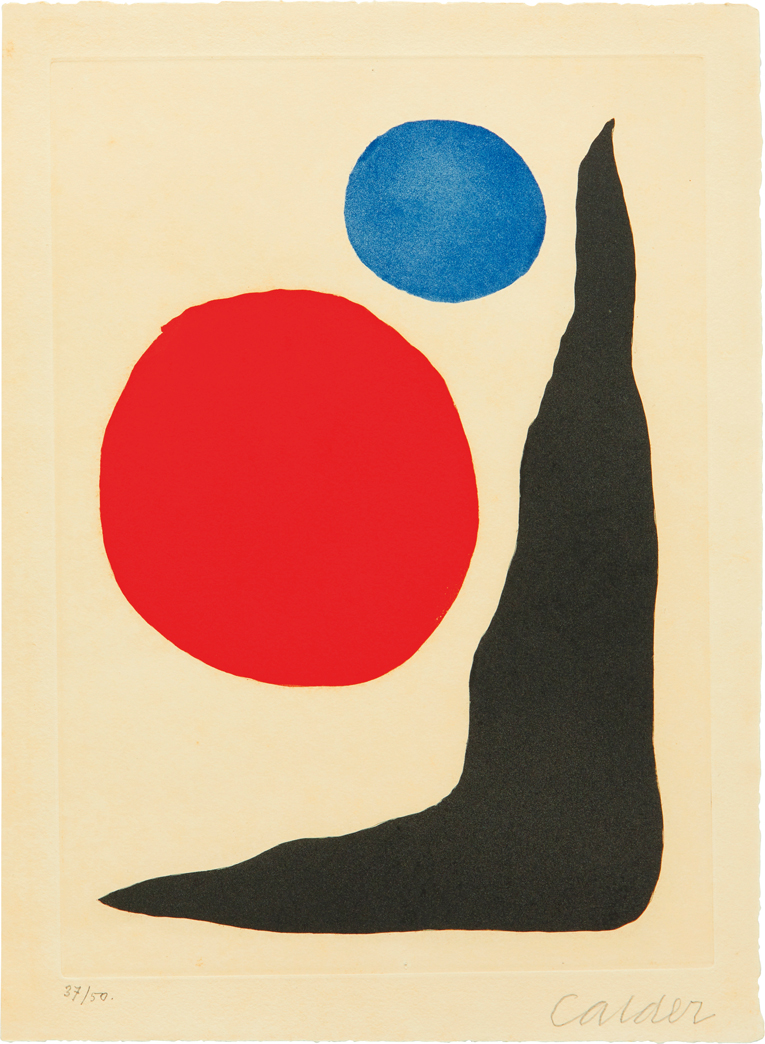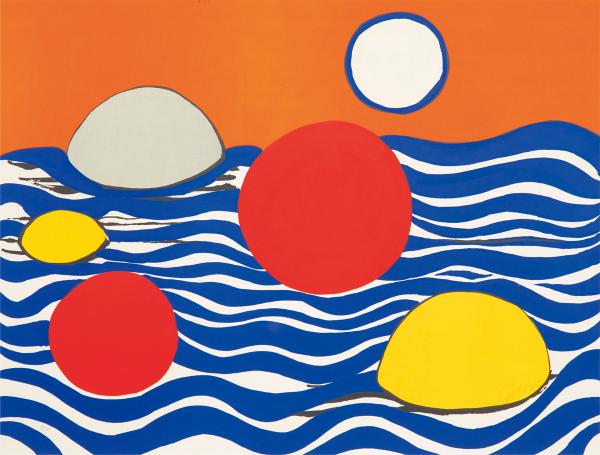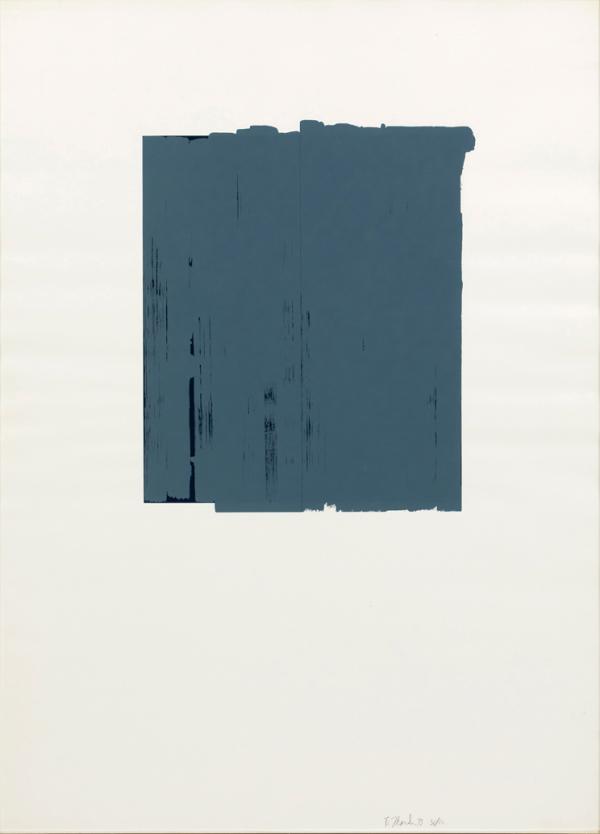- CONDITION
-
Good condition.
The artwork is signed in the lower right corner and numbered in the lower left, part of a signed edition limited to 50 copies (there is also an unsigned edition of 150).
The surface shows signs of aging with staining dispersed throughout.
Additionally, there are small pin-holes located at the upper and lower center.
- DESCRIPTION
-
Alexander CALDER (1898–1976), a leading American sculptor of the 20th century from Pennsylvania, is best known for inventing the three-dimensional kinetic sculpture known as the “mobile,” a term given by Marcel Duchamp. Born into a family of sculptors, Calder grew up immersed in art, nurturing a love for making things and a playful spirit from an early age. His work gave sculptural form to the invisible forces of wind, gravity, and chance, infusing what had once been static with poetic vitality and a sense of play. During his time in Paris, Calder connected with avant-garde artists and developed a distinctive language of abstraction. His creations, now installed as public art around the world, have left a lasting impact on the history of modern art.
In his later years, Calder enthusiastically explored printmaking, using lithography and silkscreen to translate his unique sense of motion and colour onto two-dimensional surfaces. His prints are characterised by primary colours such as red, yellow, and blue, flowing lines, and biomorphic shapes that oscillate between abstraction and figuration. These works carry a refined spatial balance and a light-hearted humour. The structured yet poetic compositions seen in works like these echo the same playful engagement with gravity and chance found in his sculptures. Subtle motifs of humans, animals, and nature are interwoven throughout, making Calder’s prints not merely an extension of his sculptural work, but a vital artistic realm in which his philosophy took root and flourished—one that is now celebrated alongside his three-dimensional masterpieces.
Publisher: Éditions O. Lazar-Vernet, Paris





